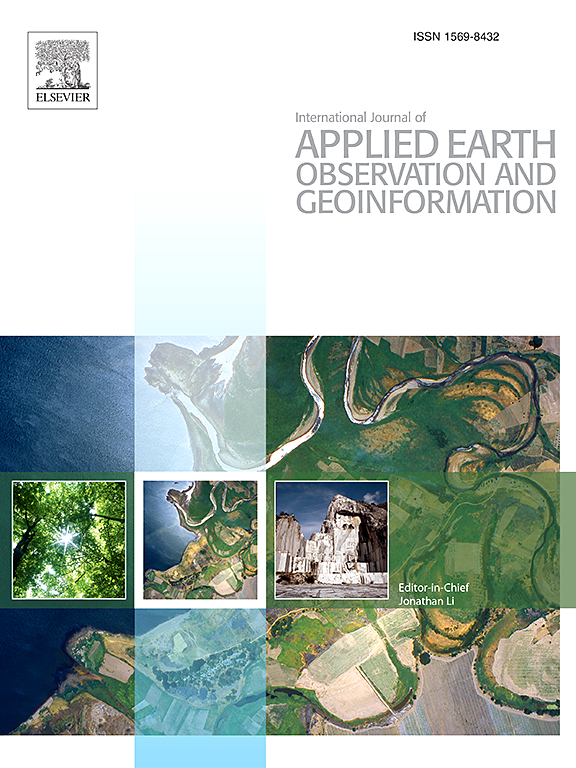An integrated object-based sampling approach for validating non-contiguous forest cover maps in fragmented tropical landscapes
IF 7.6
Q1 REMOTE SENSING
International journal of applied earth observation and geoinformation : ITC journal
Pub Date : 2025-03-25
DOI:10.1016/j.jag.2025.104497
引用次数: 0
Abstract
Validating forest cover maps is essential for evidence-based conservation and sustaining ecosystem services. However, complex spatial patterns in fragmented tropical forest landscapes—often comprising non-contiguous forest patches, interspersed with agricultural lands and other land cover types—pose considerable difficulties for accuracy assessment using conventional techniques. To address this, we developed an integrated object-based sampling (IOBS) method that combines stratified random sampling, proportional allocation, and sample distance optimization. The IOBS method was applied to assess the accuracy of the Japan Aerospace Exploration Agency (JAXA) global 25 m PALSAR-2/PALSAR forest/non-forest (FNF) 2020 map across 14 ecoregions in Nigeria. Its performance was compared to simple random, systematic, and stratified random sampling using the coefficient of variation (CV), heterogeneity index (HI), and true accuracy metrics. IOBS demonstrated substantially higher spatial variability (CV = 109.37) and heterogeneity (HI = 0.21) compared to other methods (CV = 28.84–53.93, HI = 0.05–0.11). The IOBS estimated an accuracy of 81.1 %, closely aligning with the true accuracy of 82.4 % and outperforming other methods (75.3 %–79.7 %). The higher performance of IOBS stems from its ability to capture a broad range of forest conditions—from extensive contiguous cover to small, fragmented patches—while minimizing spatial autocorrelation through distance optimization. By better representing local heterogeneity, IOBS offers a robust and precise framework for validating categorical forest cover maps in complex tropical landscapes, advancing accuracy assessment practices for remote sensing applications.

求助全文
约1分钟内获得全文
求助全文
来源期刊

International journal of applied earth observation and geoinformation : ITC journal
Global and Planetary Change, Management, Monitoring, Policy and Law, Earth-Surface Processes, Computers in Earth Sciences
CiteScore
12.00
自引率
0.00%
发文量
0
审稿时长
77 days
期刊介绍:
The International Journal of Applied Earth Observation and Geoinformation publishes original papers that utilize earth observation data for natural resource and environmental inventory and management. These data primarily originate from remote sensing platforms, including satellites and aircraft, supplemented by surface and subsurface measurements. Addressing natural resources such as forests, agricultural land, soils, and water, as well as environmental concerns like biodiversity, land degradation, and hazards, the journal explores conceptual and data-driven approaches. It covers geoinformation themes like capturing, databasing, visualization, interpretation, data quality, and spatial uncertainty.
 求助内容:
求助内容: 应助结果提醒方式:
应助结果提醒方式:


